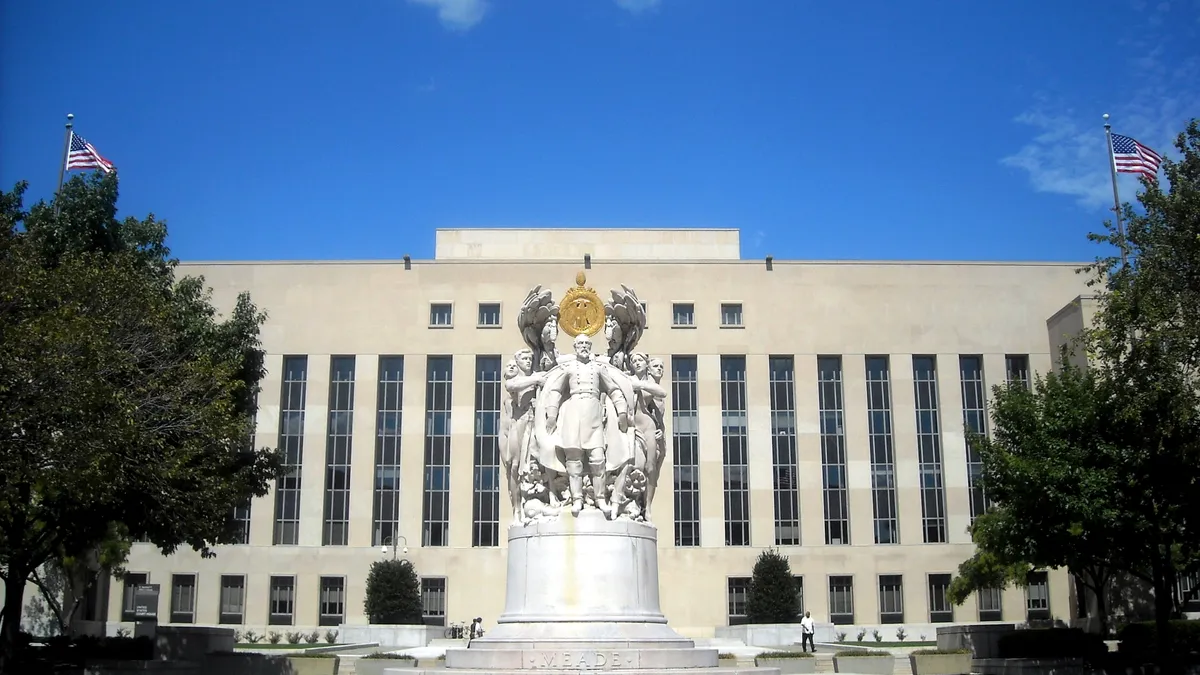Dive Brief:
- The Clean Air Act took center stage at the D.C. Circuit Court this morning as judges considered statutory critiques to the Environmental Protection Agency's (EPA) Clean Power Plan, promulgated under the law to cut carbon emissions from the power sector.
- Petitioners argued that the EPA exceeded its authority under the Clean Air Act by effectively compelling owners of coal-fired power plants to make investments in renewable resources or retire their plants prematurely. The EPA can force generation owners to improve their plants, they argued, but not mandate investments in entirely new generation sources.
- Agency backers, including a group of power utilities, argued many coal plants will continue to operate under the rule, and that the "power shifting" from coal to gas and renewables envisioned under the rule is how the power sector would have complied with any carbon regulation.
Dive Insight:
It was difficult to say which side got the better of the first three-and-a-half hours of Clean Power Plan testimony at the D.C. Circuit this morning. The 10-judge panel proved quite active, with all but two judges questioning the testifying lawyers during the morning session.
In his opening statement, West Virginia Solicitor General Elbert Lin told the court that the CPP would dramatically transform the power sector of his state and the nation as a whole.
By deploying a "little used" provision of the Clean Air Act — Section 111(d) — Lin argued that the EPA is effectively compelling coal plant owners to either make investments in renewable energy or shut down prematurely. The CPP, he noted, sets target emission rates for fossil fuel generators, not allowing them to operate if they emit above those thresholds.
Those standards, Lin and other petitioners argued, are "impossible" for existing coal plants to meet, meaning if they want to stay open, plant owners need to purchase emissions credits to offset their carbon pollution. This effectively mandates coal plant owners to subsidize their competitors or shut down, the petitioners argued.
That sort of "generation shifting," is outside of the EPA's authority, petitioners said. While the Clean Air Act allows EPA to mandate performance improvements at individual power plants, they argue it does not allow them to mandate plant owners invest in different generation resources — wind and solar in this case — to offset pollution rates.
But to the EPA and many in the power sector, this type of regulation is already commonplace.
"Generation shifting is business as usual for the power sector," Kevin Poloncarz, a lawyer representing power company intervenors, told the judges. In fact, he said his utility clients expressly asked for the EPA to construct the regulation this way, since emissions trading would beget the cheapest pollution abatement, especially compared with the alternative of setting emissions caps for each individual generator.
"Ultimately, this is how the power sector would comply regardless," Poloncarz told the judges.
Though the EPA has not used Section 111(d) in exactly this manner before, agency lawyers said they are well within the Clean Air Act's limits.
The law compels the agency to devise the "best system of emission reductions" (BSER) for any given pollutant, EPA lawyers noted, and that's what the agency did after the Supreme Court ruled in 2007 (Massachusetts v. EPA) that the EPA must regulate carbon under the act.
Whether that interpretation holds up for the judges remains to be seen. During the hearing, judges weighed the prospect of deferring to the EPA on the construction of the rule, or deciding that the CPP is such an important regulatory scheme that their intervention is justified.
"I feel somewhat betwixt and between," Judge Patricia Millet, an Obama appointee, said during the hearing. On one side, Mass v. EPA shows that the Supreme Court was aware of Congressional inaction and wanted the EPA to regulate carbon. That would push for deference.
But at the same time, she said, the impacts of the case could be so immense — and the EPA's regulatory scheme so novel — that a "clear statement" might be necessary from Congress to authorize the agency to alter its Clean Air Act interpretation.
How the judges view those issues of statutory interpretation are likely to weigh on the final outcome. This afternoon, the judges will explore Constitutional issues and questions of the record in the case.
Editor's Note: This story is developing. We will update it as we learn more.













